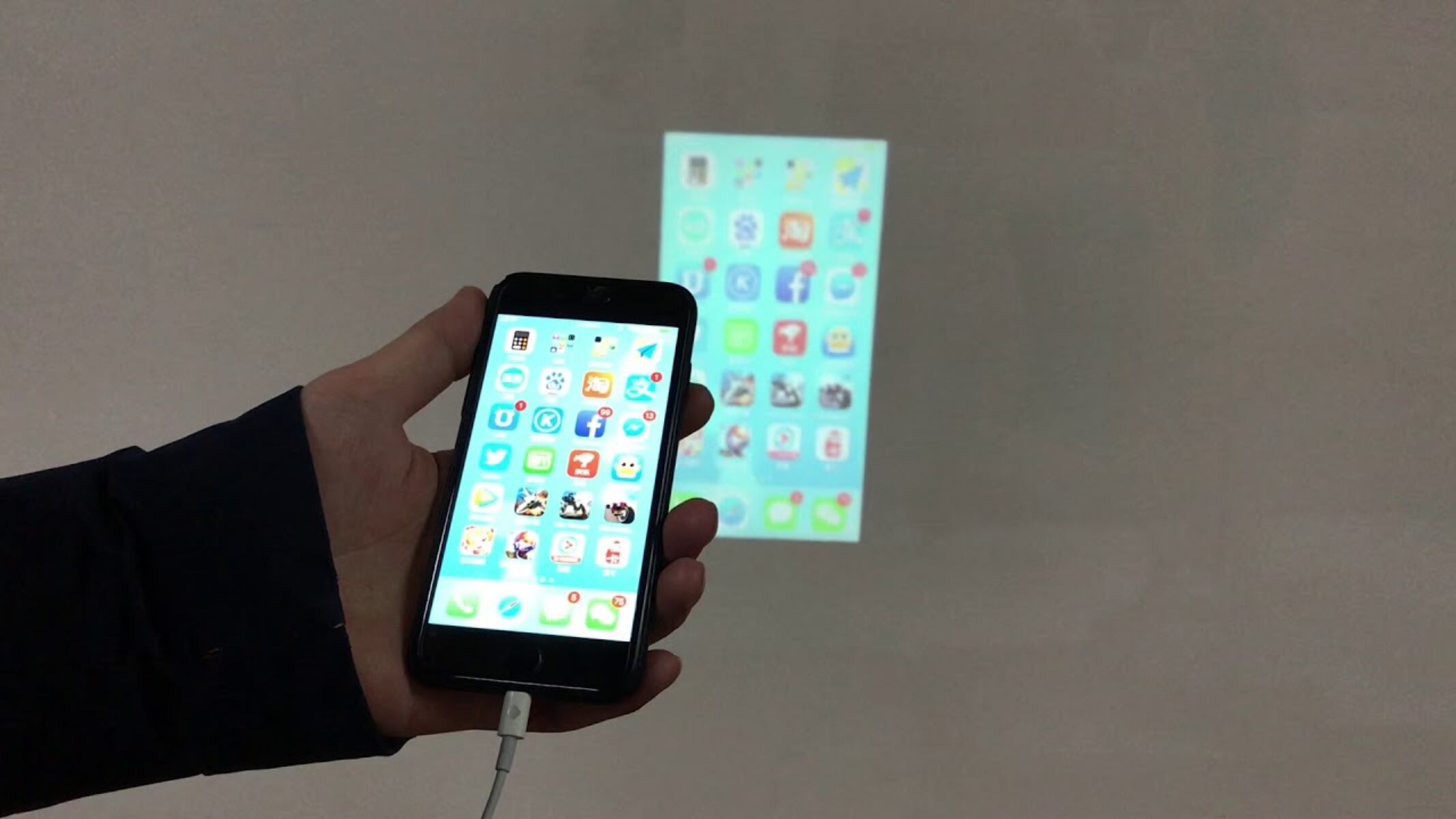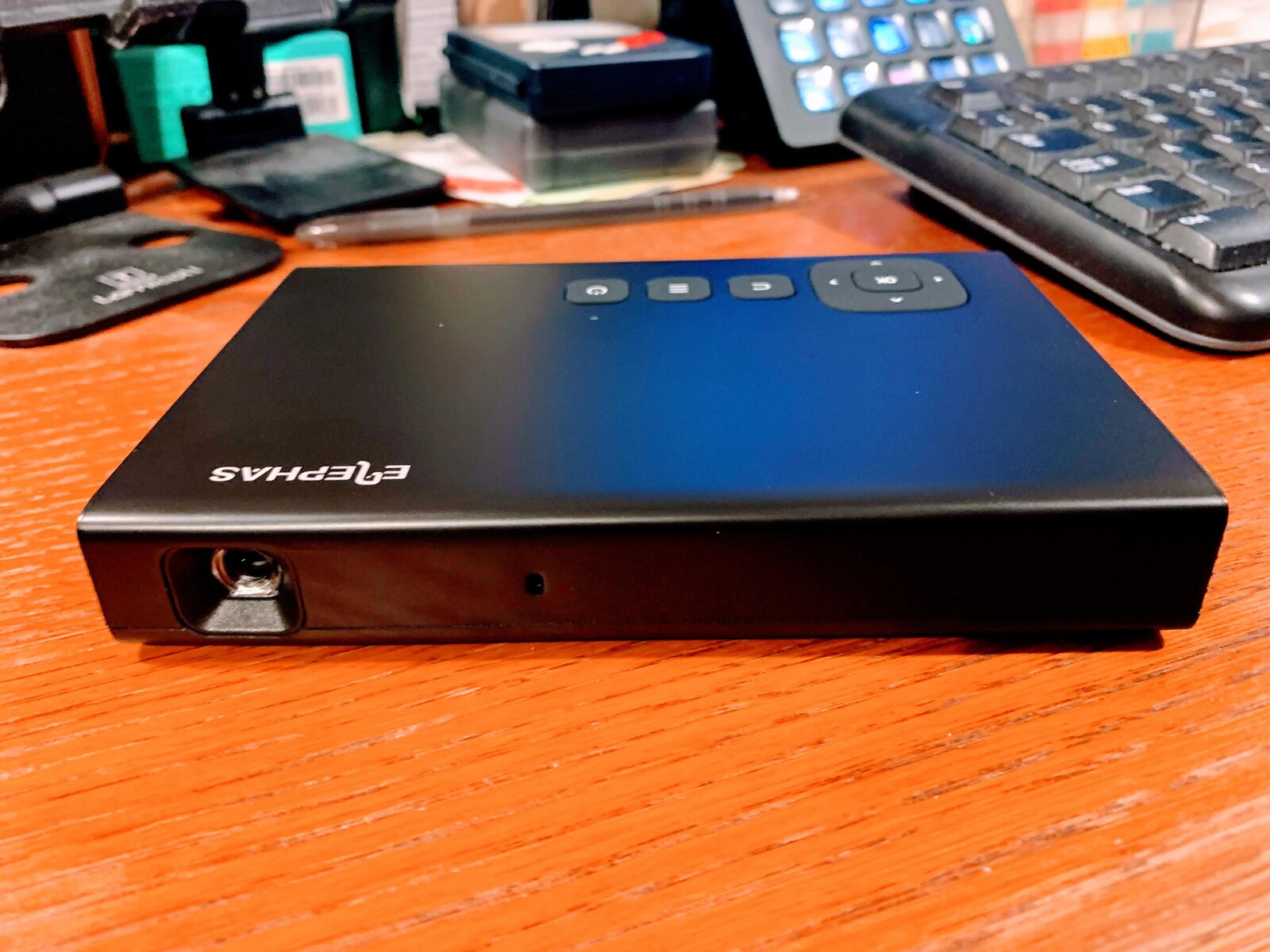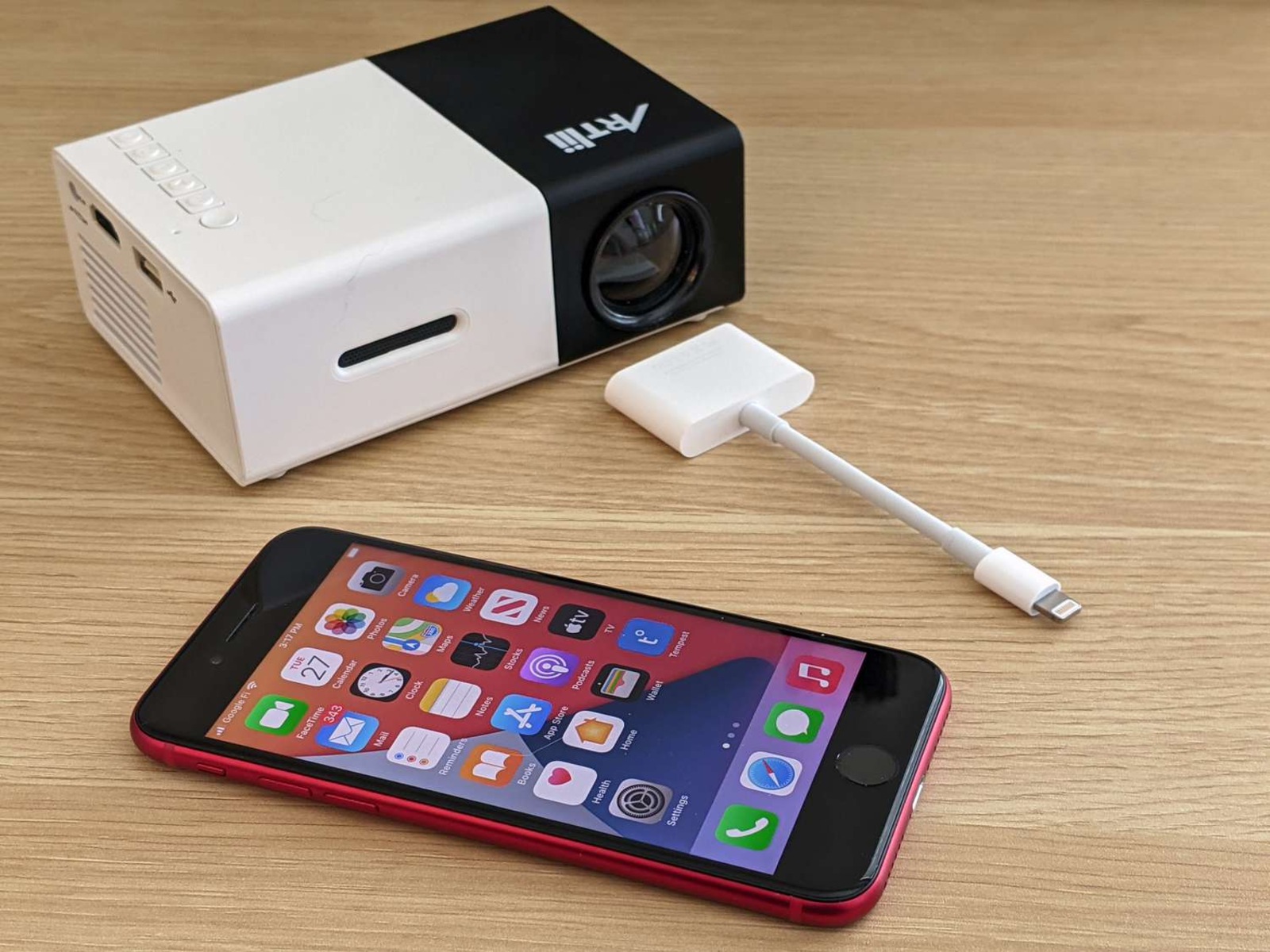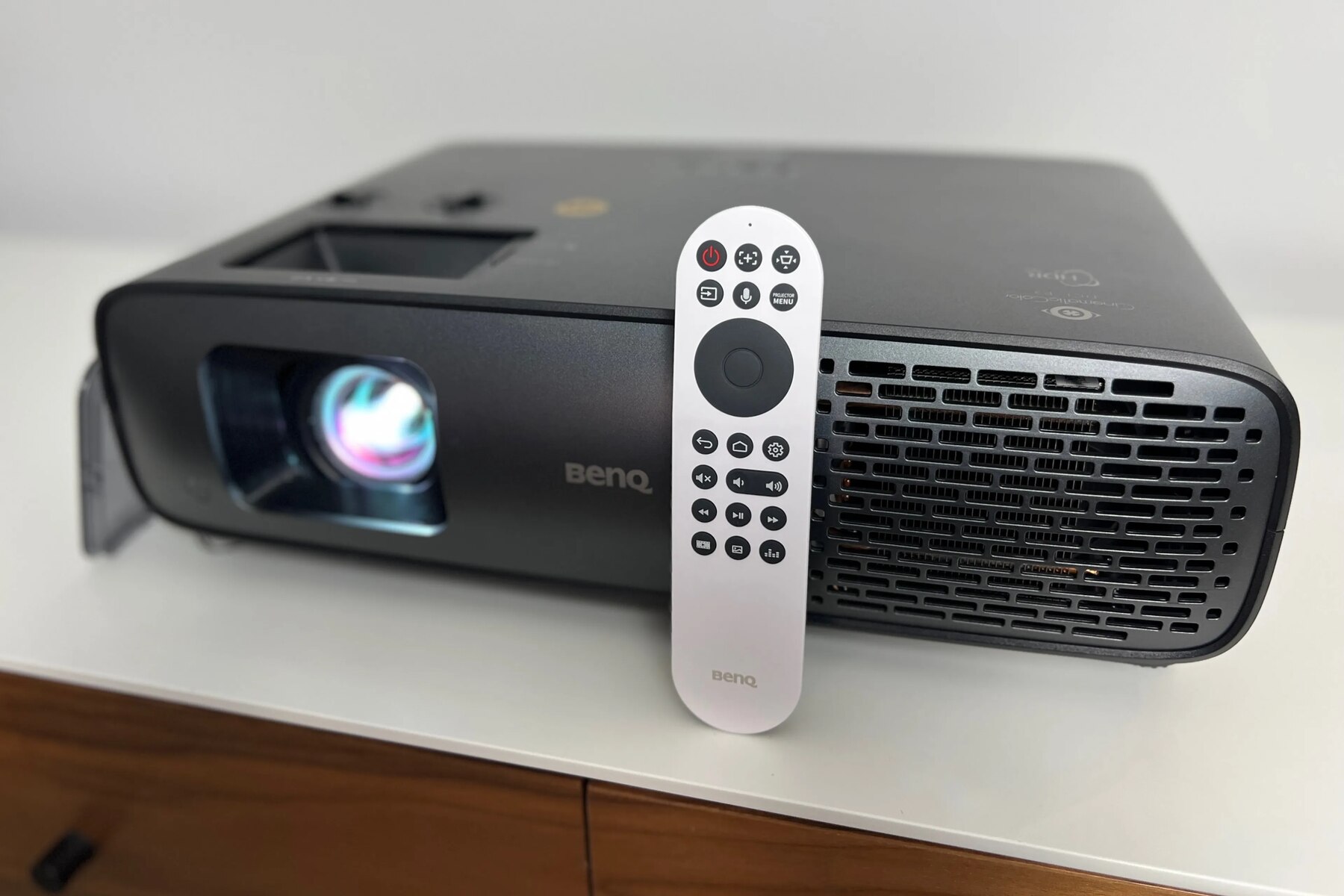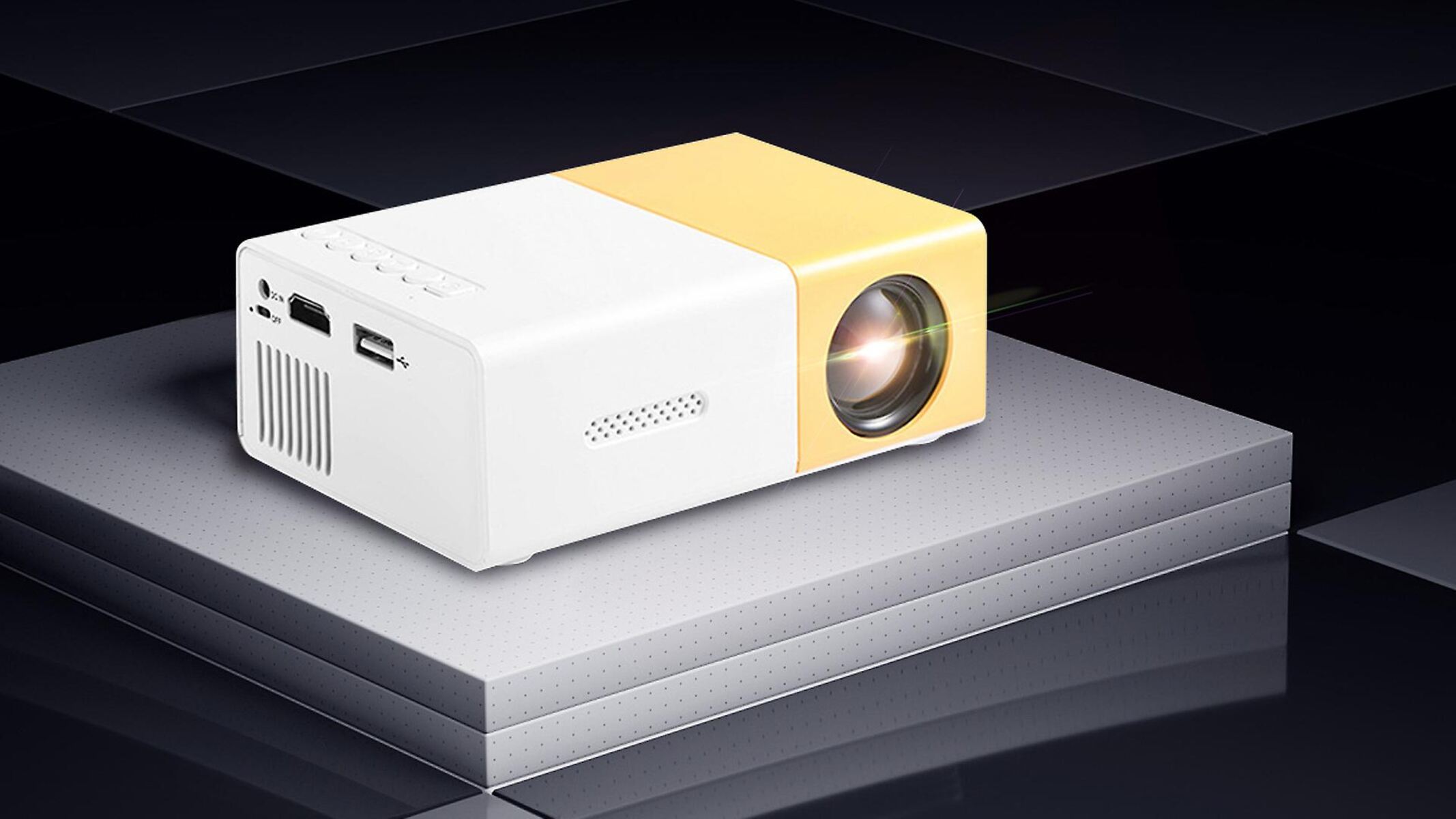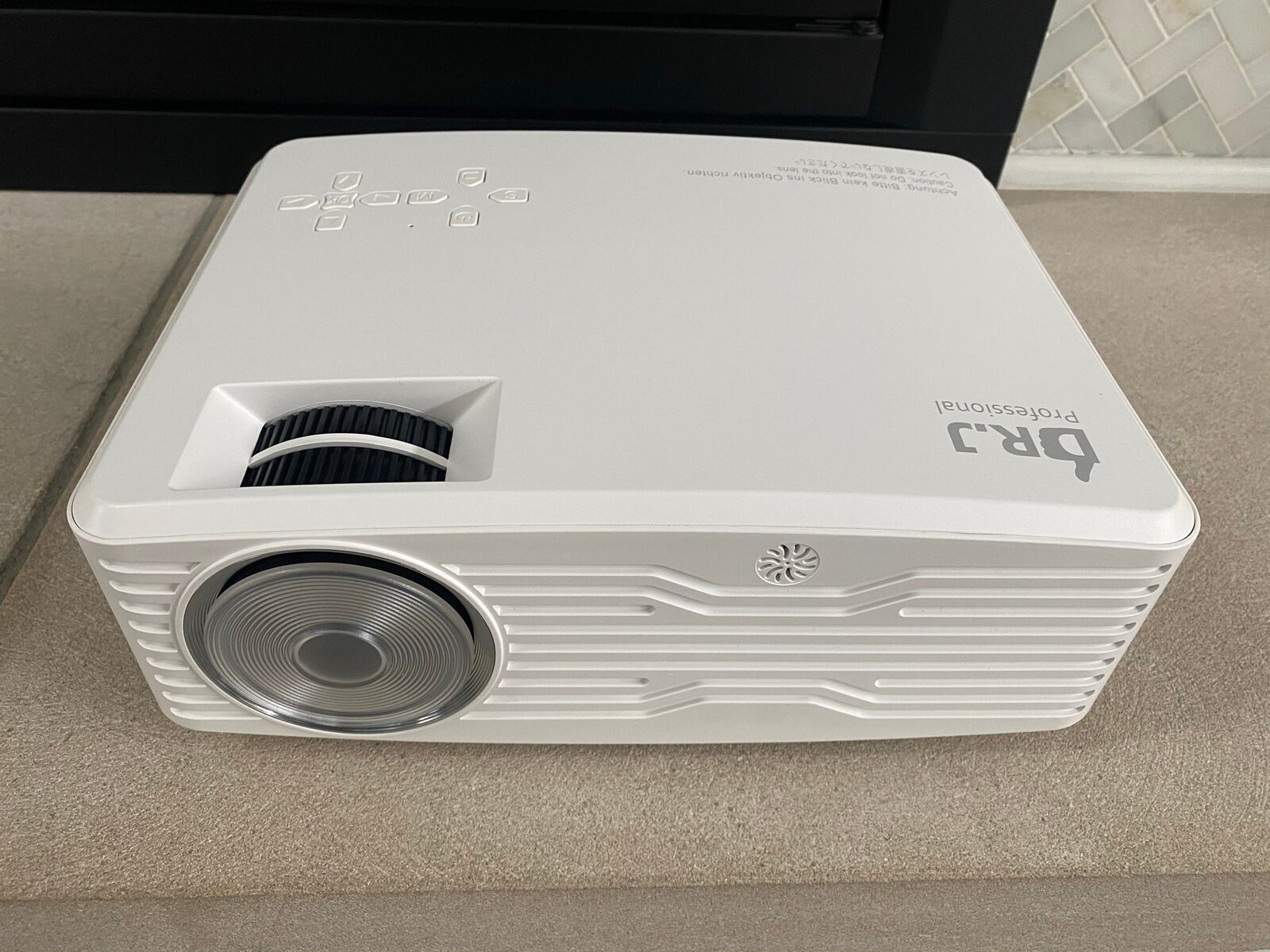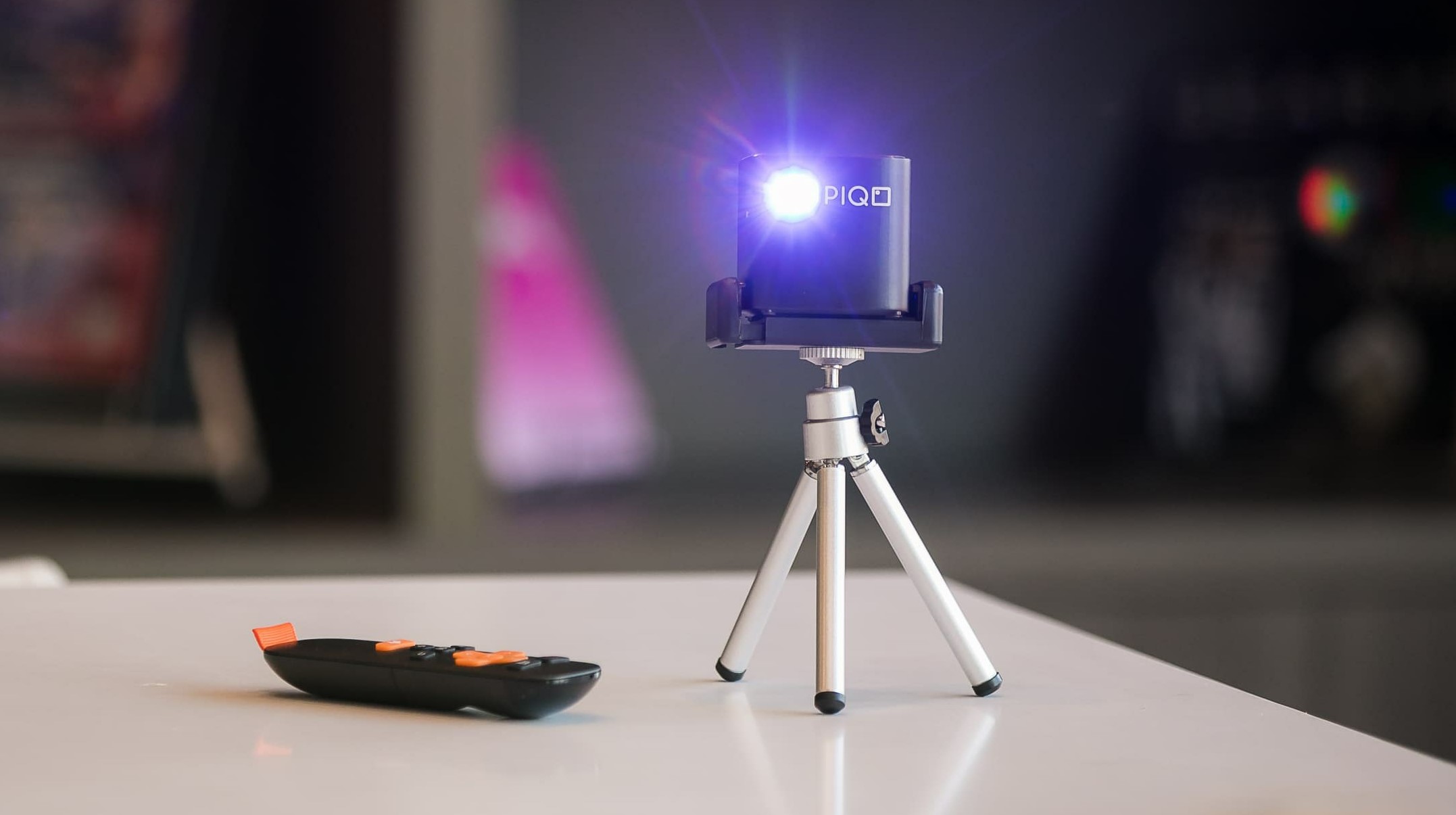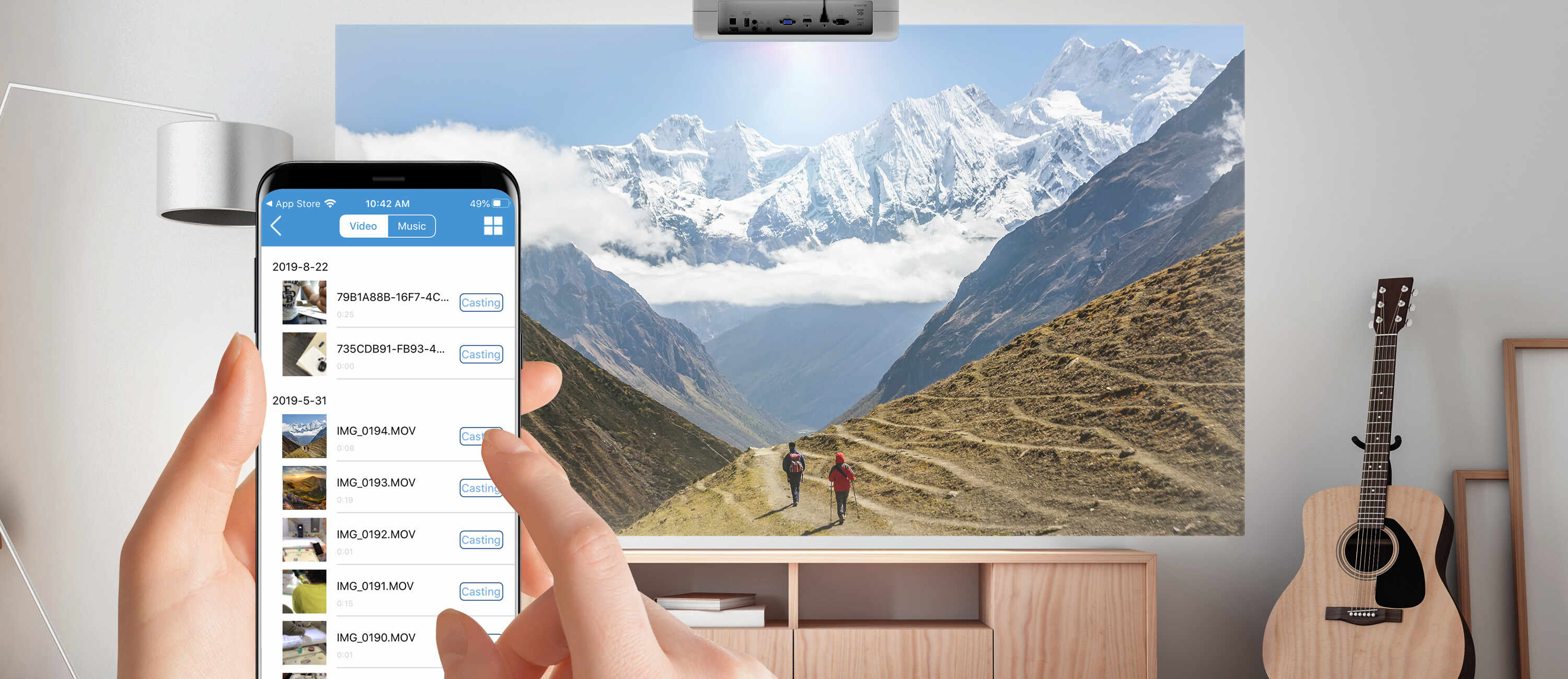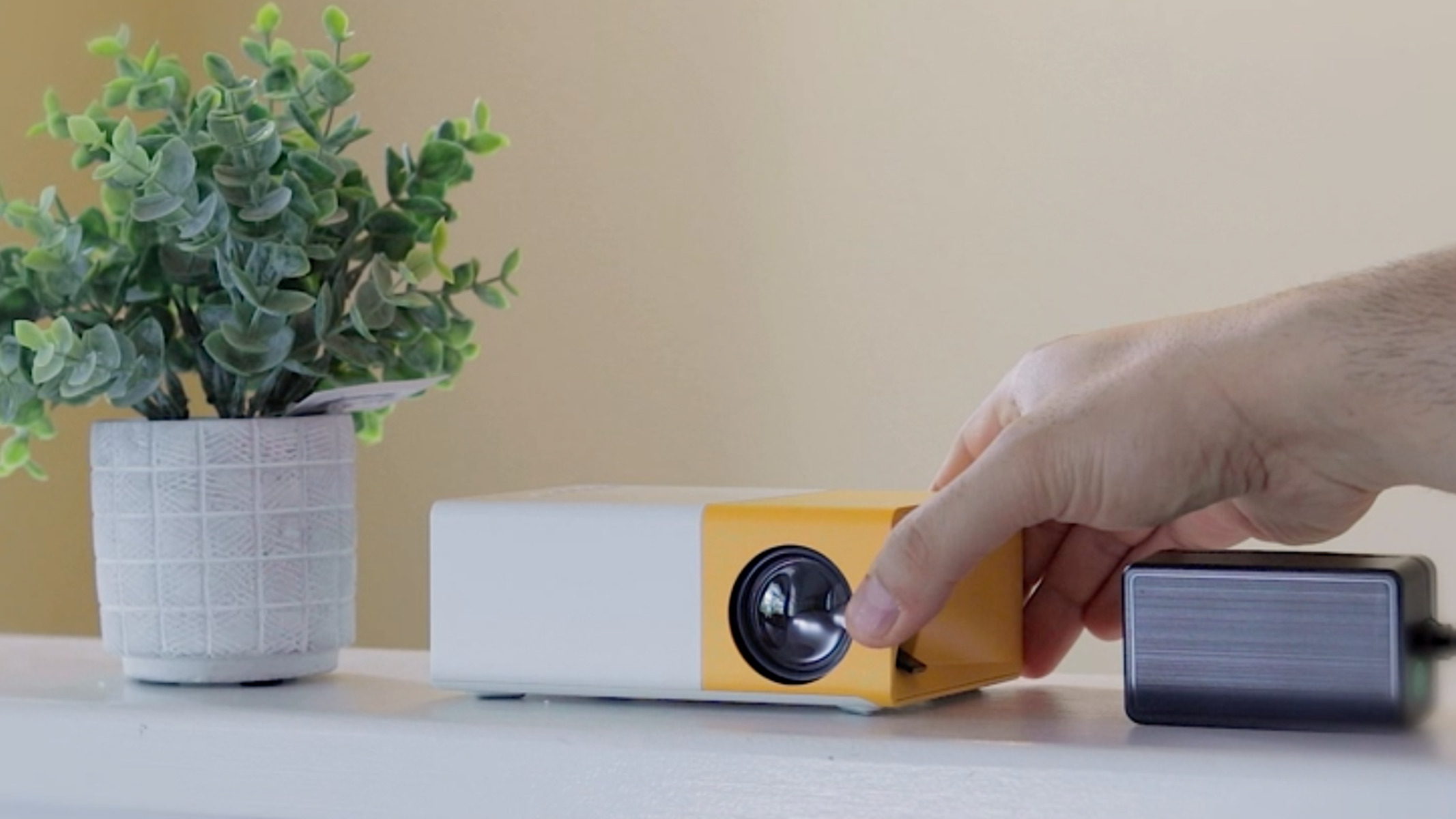Introduction
Screen mirroring is a convenient and versatile way to display the content of your iPhone on a larger screen, such as a projector. Whether you want to share videos, photos, presentations, or any other media from your iPhone, screen mirroring allows you to do so seamlessly.
Screen mirroring essentially duplicates the screen of your iPhone onto another display device, such as a projector, allowing you to view and interact with your iPhone’s content on a bigger screen. This technology opens up a world of possibilities, whether you’re giving a presentation, enjoying a movie marathon, or showcasing your latest photo collection.
While screen mirroring may sound complex, it is actually quite straightforward and can be accomplished using various methods, depending on the equipment you have available. In this article, we will explore several methods to screen mirror an iPhone to a projector, giving you the freedom to choose the method that best suits your needs.
Before we dive into the different methods, it is important to identify the requirements for screen mirroring. First and foremost, you need an iPhone with iOS support for screen mirroring. The specific iPhone models that support screen mirroring may vary, so ensure that your iPhone is compatible.
Additionally, you will require a projector or display device that can accept the input from your iPhone. This can be a traditional projector with HDMI inputs or a wireless display device that supports screen mirroring. Finally, depending on the method you choose, you may need additional accessories or apps to facilitate the screen mirroring process.
What Is Screen Mirroring?
Screen mirroring, also known as screen casting or screen sharing, is a technology that allows you to mirror the display of one device onto another. In the context of an iPhone and a projector, screen mirroring enables you to project your iPhone’s screen onto a larger display, such as a projector screen, TV, or monitor.
When you engage in screen mirroring, your iPhone’s screen becomes an exact replica of what is displayed on the larger connected display. This means that any activity, such as streaming videos, playing games, or browsing the internet, can be projected in real-time.
The mirroring process works by wirelessly transmitting or physically connecting your iPhone to the projector or display device. This allows you to showcase your iPhone’s content on a bigger screen, making it ideal for presentations, multimedia viewing, collaborative work, and more.
One practical use of screen mirroring is during business presentations. Rather than relying on a small iPhone screen for everyone to see, you can screen mirror your iPhone to a projector, allowing everyone in the room to have a clear view of the content.
In a similar vein, screen mirroring can enhance entertainment experiences. You can enjoy the latest movies, TV shows, or streaming services on a larger screen, providing a more immersive viewing experience.
Moreover, screen mirroring can be helpful in educational settings. Teachers can mirror their iPhone’s screen to a projector, enabling students to follow along with presentations or access online resources easily.
Overall, screen mirroring offers a convenient way to extend your iPhone’s display onto a projector or larger screen. It provides new possibilities for collaboration, entertainment, and education, allowing you to make the most of your iPhone’s capabilities.
Requirements for Screen Mirroring iPhone to Projector
In order to successfully screen mirror your iPhone to a projector, there are several essential requirements that need to be met. These include:
- Compatible iPhone: Ensure that your iPhone supports screen mirroring. Most recent iPhone models, starting from iPhone 5 and above, have built-in support for screen mirroring.
- Projector or Display Device: You will need a projector or display device that is capable of connecting to your iPhone. This can be a traditional projector with HDMI inputs or a wireless display device that supports screen mirroring.
- HDMI Cable or Wireless Connection: Depending on the method you choose, you will either need an HDMI cable or a wireless connection to connect your iPhone to the projector. For wired connections, you will need a Lightning to HDMI adapter to connect your iPhone to the projector.
- Internet Connection: Some screen mirroring methods, such as using AirPlay, may require an internet connection for the initial setup. Ensure that you have a stable internet connection available.
- Compatible Apps or Software: Depending on the screen mirroring method you choose, you may require specific apps or software on both your iPhone and the projector or display device. Make sure to check the compatibility requirements for the chosen method.
It is important to note that screen mirroring requirements may vary depending on the specific method you choose. It’s always recommended to consult the user manuals or online guides provided by the manufacturers of your iPhone and projector or display device to ensure compatibility and understand any additional requirements.
By ensuring that you have the necessary requirements in place, you can ensure a smooth and successful screen mirroring experience. With the right equipment and setup, you’ll be able to showcase your iPhone’s content on a larger screen, bringing your media, presentations, and more to life.
Method 1: Using a Lightning to HDMI Adapter
One of the most straightforward methods to screen mirror your iPhone to a projector is by using a Lightning to HDMI adapter. This method allows you to physically connect your iPhone to the projector using a wired connection.
Here’s how you can use a Lightning to HDMI adapter for screen mirroring:
- Start by ensuring that your iPhone and projector are turned off.
- Connect one end of the HDMI cable to the HDMI port on the projector.
- Connect the other end of the HDMI cable to the Lightning to HDMI adapter.
- Insert the Lightning end of the adapter into your iPhone’s charging port.
- Turn on your projector and set it to the correct HDMI input source.
- Turn on your iPhone.
- Your iPhone’s screen should now be mirrored on the projector. You can navigate through your iPhone’s content and it will be displayed in real-time on the projector screen.
This method is ideal for situations where a wired connection is preferred or when a wireless connection is not available. It provides a reliable and stable connection, ensuring that your screen mirroring experience is smooth and lag-free.
Keep in mind that you may need to adjust the display settings on your iPhone and projector to optimize the screen mirroring experience. Additionally, certain apps or content may have restrictions on screen mirroring due to copyright or digital rights management (DRM) limitations.
Overall, using a Lightning to HDMI adapter is a simple and effective method to screen mirror your iPhone to a projector. It allows you to enjoy your iPhone’s content on a larger screen, whether you’re giving a presentation, watching videos, or sharing photos with a larger audience.
Method 2: Using AirPlay and Apple TV
If you have an Apple TV and prefer a wireless screen mirroring solution, you can utilize AirPlay to mirror your iPhone to a projector. Apple TV acts as an intermediary device, allowing you to wirelessly mirror your iPhone’s screen onto the projector.
Here’s how you can use AirPlay and Apple TV for screen mirroring:
- Ensure that your iPhone and Apple TV are connected to the same Wi-Fi network.
- On your iPhone, open Control Center by swiping down from the top-right corner (for iPhone X or newer) or swiping up from the bottom of the screen (for older iPhone models).
- Tap on the “Screen Mirroring” option in the Control Center.
- A list of available AirPlay devices, including your Apple TV, will appear. Tap on your Apple TV to connect to it.
- Your iPhone’s screen will now be mirrored on the projector through Apple TV. You can navigate through your iPhone’s content, and it will be mirrored in real-time on the projector screen.
Using AirPlay and Apple TV provides a convenient and wireless way to screen mirror your iPhone to a projector. It eliminates the need for cables and allows for greater mobility during presentations or media viewing.
However, it is important to note that this method requires an Apple TV device, which may not be readily available to everyone. Additionally, ensure that both your iPhone and Apple TV are updated to the latest software versions, as this can affect the compatibility and functionality of AirPlay.
By leveraging AirPlay and Apple TV, you can enjoy the benefits of wireless screen mirroring and effortlessly share your iPhone’s content on a larger display.
Method 3: Using a Wireless HDMI Adapter
If you prefer a wireless screen mirroring solution without the need for an Apple TV, you can use a wireless HDMI adapter to mirror your iPhone to a projector. A wireless HDMI adapter allows you to transmit the audio and video signals from your iPhone to the projector wirelessly.
Here’s how you can use a wireless HDMI adapter for screen mirroring:
- Connect the HDMI end of the wireless adapter to the HDMI input port on the projector.
- Plug the USB power cable of the adapter into a power source or an available USB port on the projector.
- Ensure that your iPhone and the wireless HDMI adapter are connected to the same Wi-Fi network.
- On your iPhone, go to the Control Center by swiping down from the top-right corner (for iPhone X or newer) or swiping up from the bottom of the screen (for older iPhone models).
- Tap on the “Screen Mirroring” option in the Control Center.
- A list of available devices, including your wireless HDMI adapter, will appear. Tap on the adapter to connect to it.
- Your iPhone’s screen will now be wirelessly mirrored on the projector. You can navigate through your iPhone’s content, and it will be mirrored in real-time on the projector screen.
Using a wireless HDMI adapter offers flexibility and convenience, as it eliminates the need for cables and allows you to move around freely during presentations or media viewing. It also provides a reliable and stable wireless screen mirroring experience.
It’s worth noting that the specific setup process may vary depending on the brand and model of the wireless HDMI adapter you’re using. Refer to the manufacturer’s instructions for detailed information on the setup and configuration of your particular adapter.
With a wireless HDMI adapter, you can effortlessly mirror your iPhone’s screen to a projector, making it an excellent choice for those seeking a wireless screen mirroring solution without the requirement of an Apple TV.
Method 4: Using a Casting App
If you’re looking for an alternative to wired or hardware-based solutions, you can use a casting app to screen mirror your iPhone to a projector. Casting apps utilize wireless technology to stream your iPhone’s screen onto the projector or display device.
Here’s how you can use a casting app for screen mirroring:
- Ensure that your iPhone and the projector are connected to the same Wi-Fi network.
- Download and install a casting app on your iPhone. There are several popular casting apps available, such as Reflector, AirServer, and Mirroring360.
- Launch the casting app on your iPhone.
- Follow the setup instructions provided by the casting app to establish a connection between your iPhone and the projector.
- Once the connection is established, your iPhone’s screen will be mirrored on the projector. You can navigate through your iPhone’s content, and it will be mirrored in real-time on the projector screen.
Using a casting app offers a wireless and versatile solution for screen mirroring your iPhone to a projector. It allows you to mirror your iPhone’s screen without the need for additional hardware or cables, making it a convenient option for on-the-go screen mirroring.
However, it is important to note that casting apps may vary in terms of features, compatibility, and performance. Some casting apps may require a one-time purchase or a subscription to unlock all the features.
Before choosing a casting app, it is recommended to check the app’s compatibility with your iPhone, projector, and specific casting needs. User reviews and ratings can also provide insights into the overall satisfaction and performance of the app.
By leveraging a casting app, you can enjoy the benefits of wireless screen mirroring and effortlessly share your iPhone’s content on a larger display.
Tips for a Smooth Screen Mirroring Experience
Screen mirroring can greatly enhance your iPhone to projector experience, allowing you to showcase your content on a larger screen. To ensure a smooth and seamless screen mirroring experience, consider these helpful tips:
- Ensure a Strong and Stable Wi-Fi Connection: A stable Wi-Fi connection is crucial for wireless screen mirroring methods like AirPlay and casting apps. Make sure your iPhone and the projector are connected to the same Wi-Fi network, and that the network signal is strong and consistent.
- Keep Your Devices Updated: Regularly update the software on your iPhone, projector, and any additional accessories like adapters or wireless HDMI adapters. Updates often include bug fixes, performance improvements, and compatibility enhancements.
- Minimize Interference: Reduce potential Wi-Fi interference by moving away from other electronic devices that may cause signal interference, such as routers, microwaves, or cordless phones. This can help maintain a stable connection during screen mirroring.
- Optimize Display Settings: Adjust the display settings on both your iPhone and the projector to ensure the best possible image quality. Play around with settings like brightness, contrast, and resolution to achieve optimal viewing conditions.
- Close Background Apps: Close any unnecessary apps running in the background on your iPhone before initiating screen mirroring. This can help optimize your device’s performance and prevent any potential conflicts during the mirroring process.
- Avoid Streaming Large Media Files: When screen mirroring, try to avoid streaming large media files or engaging in data-intensive activities on your iPhone. These activities can put a strain on your network bandwidth and may result in lag or buffering during the screen mirroring session.
- Use a Reliable Power Source: For wired screen mirroring methods utilizing adapters, ensure that your iPhone and the projector are connected to reliable power sources. This will help avoid any interruptions caused by low battery levels or power glitches.
By following these tips, you can enhance the screen mirroring experience and ensure that your iPhone’s content is smoothly and flawlessly projected onto the larger screen of the projector.
Conclusion
Screen mirroring your iPhone to a projector opens up a world of possibilities for presentations, multimedia viewing, collaborations, and more. Whether you opt for a wired or wireless solution, there are various methods available to suit your needs.
Using a Lightning to HDMI adapter provides a simple and reliable way to connect your iPhone to a projector via a wired connection. AirPlay and Apple TV offer a wireless solution that seamlessly mirrors your iPhone’s screen to the projector. A wireless HDMI adapter allows for convenient screen mirroring without the need for additional hardware. Casting apps provide another wireless option, enabling you to stream your iPhone’s screen to the projector.
To ensure a smooth screen mirroring experience, remember to maintain a strong and stable Wi-Fi connection, keep your devices updated, optimize display settings, and minimize interference. Closing background apps and avoiding streaming large media files can also contribute to a seamless screen mirroring session.
Regardless of the method you choose, screen mirroring your iPhone to a projector extends the capabilities of your device, allowing you to share content with a larger audience and enjoy a more immersive viewing experience.
Before proceeding with screen mirroring, it’s essential to check the compatibility of your iPhone, projector, and chosen method to ensure all requirements are met. Additionally, refer to the user manuals or online guides for detailed instructions on setting up and configuring your specific equipment.
With the right setup and a little bit of know-how, you can effortlessly screen mirror your iPhone to a projector and make the most of your iPhone’s content on a bigger screen.







